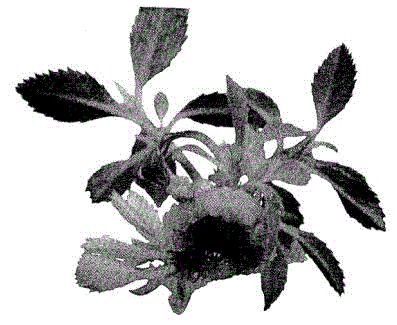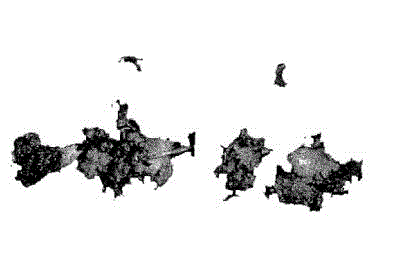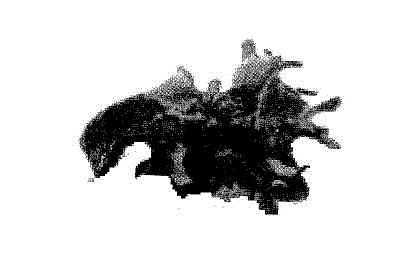Induction rapid-propagation culture method for Photinia fraseri in-vitro leaf somatic embryos
A technology of detached leaves and somatic embryos, applied in the field of botany, can solve problems such as the reduction of improved varieties, constraints on the development and promotion of tree species, and scarcity of provenance, so as to achieve robust growth of seedlings and solve the problem of germplasm degradation. Effect
- Summary
- Abstract
- Description
- Claims
- Application Information
AI Technical Summary
Problems solved by technology
Method used
Image
Examples
specific Embodiment approach
[0060] figure 1 A test-tube plantlet cultivated for value-added according to the present invention; figure 2 Somatic embryos of leaves of Photinia fragrans according to the present invention at different stages; image 3 The adventitious buds formed by the leaf body embryo of Photinia fragrans according to the present invention; Figure 4 Indefinite teeth formed directly by the blades of Photinia fragrans according to the present invention; Figure 5 The clustered buds formed for the multiplication and rapid propagation of the present invention; Image 6 It is the test-tube plantlet after rooting culture and seedling hardening according to the present invention; Figure 7 It is the plant grown through transplanting according to the present invention.
[0061] like Figure 1-Figure 7 Shown:
Embodiment 1
[0063] The method for inducing rapid propagation of somatic embryos from isolated leaves of Photinia fragrans comprises the following steps:
[0064] (1) Establish a regeneration system for Photinia fragrans sterile test-tube seedlings:
[0065] (1.1) Material selection and material treatment: Select a single plant with strong growth and excellent performance in the morning of a sunny day in spring, spray the selected branches with 5% carbendazim, spray once a week, and spray continuously for one month, and then cut the newly germinated branches. For twigs free of diseases and insects, including the non-lignified and semi-lignified parts at the front, remove excess stems and leaves, soak the required parts in detergent solution for 5 minutes, then carefully wash with cotton balls, and then rinse with running water for 1 hour, and finally Soak in 2% NaClO solution for 15 minutes, then rinse with sterile water, dry the water with sterilized filter paper and set aside;
[0066] ...
Embodiment 2
[0079]The method for inducing rapid propagation of somatic embryos from isolated leaves of Photinia fragrans comprises the following steps:
[0080] (1) Establish a regeneration system for Photinia fragrans sterile test-tube seedlings:
[0081] (1.1) Material selection and material treatment: Select a single plant with strong growth and excellent performance in the morning of a sunny day in spring, spray the selected branches with 5% carbendazim, spray once a week, and spray continuously for one month, and then cut the newly germinated branches. For twigs free from diseases and insect pests, including the non-lignified and semi-lignified parts at the front, remove excess stems and leaves, soak the required parts in detergent solution for 10 minutes, then carefully wash with cotton balls, and then rinse with running water for 1 hour, and finally Soak in 2% NaClO solution for 15 minutes, then rinse with sterile water, dry the water with sterilized filter paper and set aside;
...
PUM
 Login to View More
Login to View More Abstract
Description
Claims
Application Information
 Login to View More
Login to View More - R&D
- Intellectual Property
- Life Sciences
- Materials
- Tech Scout
- Unparalleled Data Quality
- Higher Quality Content
- 60% Fewer Hallucinations
Browse by: Latest US Patents, China's latest patents, Technical Efficacy Thesaurus, Application Domain, Technology Topic, Popular Technical Reports.
© 2025 PatSnap. All rights reserved.Legal|Privacy policy|Modern Slavery Act Transparency Statement|Sitemap|About US| Contact US: help@patsnap.com



